Kids Bike Size Chart: How to Measure & Choose Yours
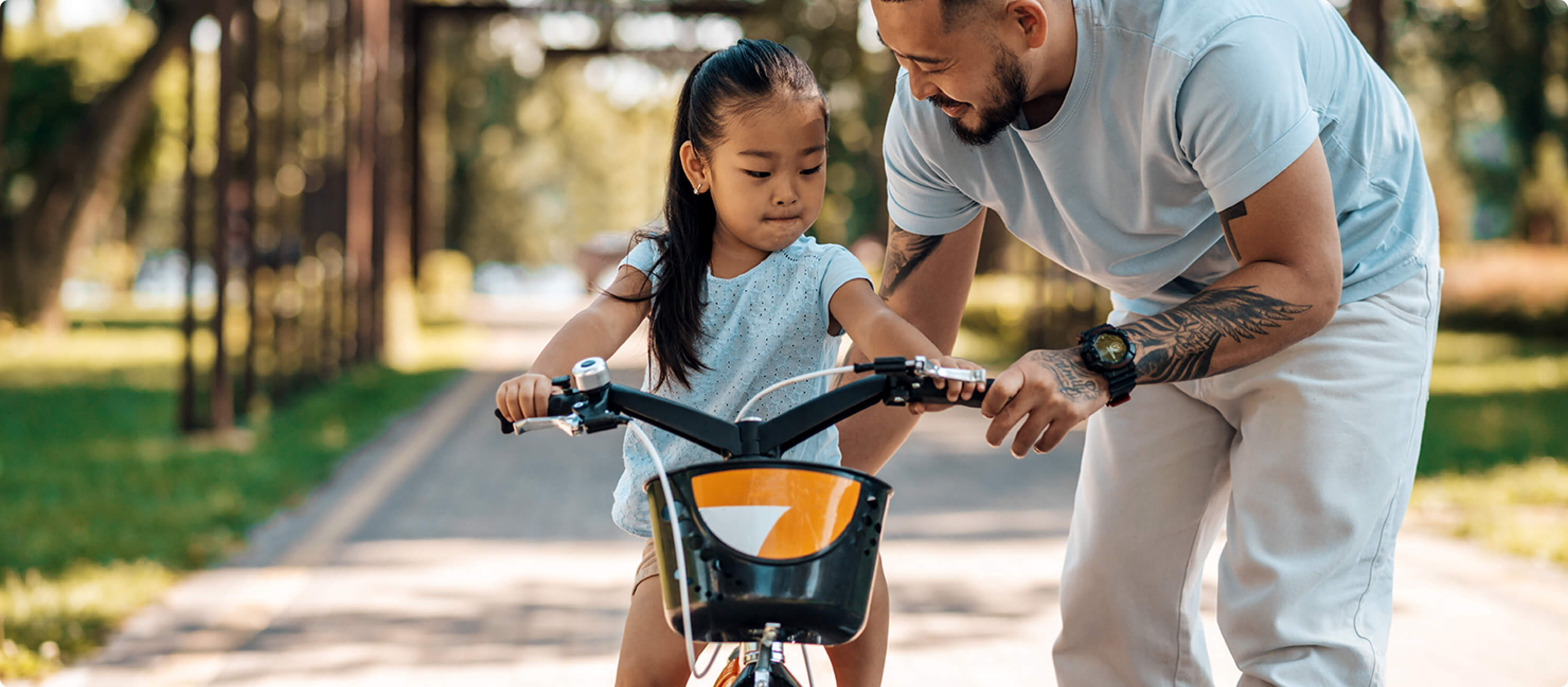
Whether you're buying your child's first bike or they've outgrown their current one, choosing the right size is a big decision! Our experts compiled top considerations, so you don't have to.
Our complete guide can help you find the right size bike for them based on their inseam, age, and height with ease:
Key Takeaways
- Learn the two methods you have to measure bikes for kids and how kids' bikes are measured differently than adult bikes.
- Check out our kid's bike size chart! This is the simple and easy method when you need to quickly find your child’s accurate bike size based on their height, inseam, and age.
- Discover how to measure bike size for kids step by step using the more personalized, in-depth method. Measure their inseam, determine wheel size, look up brand specifications, and factor in your child’s riding experience and seat height.
- Read our tips about choosing a bike your child currently fits + can grow into so they can get more use out of their bike.
- Uncover what to do when your child is in-between kids’ bike sizes with our expert recommendations.
Why Kids’ Bike Wheel Size Matters
Wheel size ultimately determines kids’ bike size (unlike adult bikes, which are measured by frame size and seat height). But you’ll have to know how to translate the wheel size back into your child’s height and inseam measurements.
Luckily, you have two methods to consider when measuring a kids’ bike size:
- Method 1: Use a kids’ bike size chart — This method is the quickest way to match their height + inseam with a wheel size! Our size chart helps alleviate any confusion you may feel when choosing a bike for your child.
- Method 2: Learn to manually measure bike size for kids — If you want a more personal, thorough way to ensure your bike of choice can accommodate your child the best, use this method. We walk you through each step without the fluff!
Use a Kids’ Bike Size Chart (Method 1)
To help you find the perfect fit for your kiddo (or kids), we've put together the following kids’ bike size chart. We outline the recommended wheel sizes, age ranges, height ranges, and typical features for each size:
| Wheel Size (in) | Age | Height (in) | Height (ft) | Inseam (in) | Inseam (ft) | Typical Bike Features |
| 12” | 2-3 years | 36” - 39” | 3’ - 3’3” | 13” - 17” | 1’1” - 1’5” |
|
| 14” | 3-5 years | 37” - 44” | 3’1” - 3’8” | 15” - 20” | 1’3” - 1’8” |
|
| 16” | 4-6 years | 41” - 48” | 3’5” - 4’ | 16” - 22” | 1’4” - 1’10” |
|
| 20” | 5-8 years | 45” - 54” | 3’9” - 4’6” | 19” - 25” | 1’7” - 2’1” |
|
| 24” | 8-11 years | 49” - 59” | 4’1” - 4’11” | 23” - 28” | 1’11” - 2’4” |
|
| 26” | 10-12+ years | 56”+ | 4’8”+ | 25”+ | 2’1”+ |
|
Take this bike size chart for kids to go! Simply click the button below to download this chart to your phone or print it off before you visit us in-store.
Learn to Manually Measure Bike Size for Kids (Method 2)
- Step 1: Measure your child’s inseam by using a retractable tape measure. Measure from the ground to their groin. Ask your child to place a ruler or a book between their legs and measure from the ground to the top of it.
- Step 2: Determine the wheel size by using our kids’ bike size chart and taking their age, height, and inseam into consideration.
- Step 3: Look up the product specifications for the bike you want. You can find the standover height plus seatpost height for the bike model that you’re interested in.
- Step 4: Determine your child’s riding ability & optimal seat height. Do they need training wheels or other accommodations?
Step 1: Measure Your Child’s Inseam

Have your child stand up straight with their back against the wall and follow these steps:
- 1: Make sure your kiddo has their bike-riding shoes on.
- 2: Ask your child to place a book or ruler between their legs. This should be tucked right against the groin area and not leave any space between the book and the groin.
- 3: Using a tape measure, measure from the ground to the top of the book or ruler.
Expert Tip:
You can also use this time to measure their height. Try measuring them three separate times to make sure you’re getting the most accurate height possible.
Step 2: Determine the Wheel Size

Using our kids’ bike size chart, you can find their wheel size, based on their age, height, and inseam measurements.
- When figuring out wheel size, the inseam is the most important factor to consider.
- Kids come in all different shapes and sizes, so it’s no surprise when two kids the same age have very different heights.
Expert Tip:
You might find that your child falls into multiple categories. If they’re on the cusp of a bigger wheel size, opt for the bigger one so they can grow into their bike.
Step 3: Look Up the Product Specifications for the Bike You Want

Just like no two kids are the same, bikes also all have unique nuances and features that may (or may not) matter to you and your child. Among those features and specifications, you’ll want to pay attention to two factors: standover height & seat post height.
- What is standover height? The standover height is the distance from the ground to the tube between your child's legs on a bike. Make sure your child can easily swing their leg over the bike.
- What is seat post height? Seat post height is how high the seat is from the ground, and you can change it to make it easier or harder to ride.
Unfortunately, not every manufacturer is as forthcoming as others with this information. Just after wheel size, comes these two specs when you’re looking for a new bike model or upgrade.
Expert Tip:
A child’s inseam has to at least match a bike’s standover height. More room simply offers more comfort when riding the bike.
Step 4: Assess Your Child’s Riding Ability & Optimal Seat Height
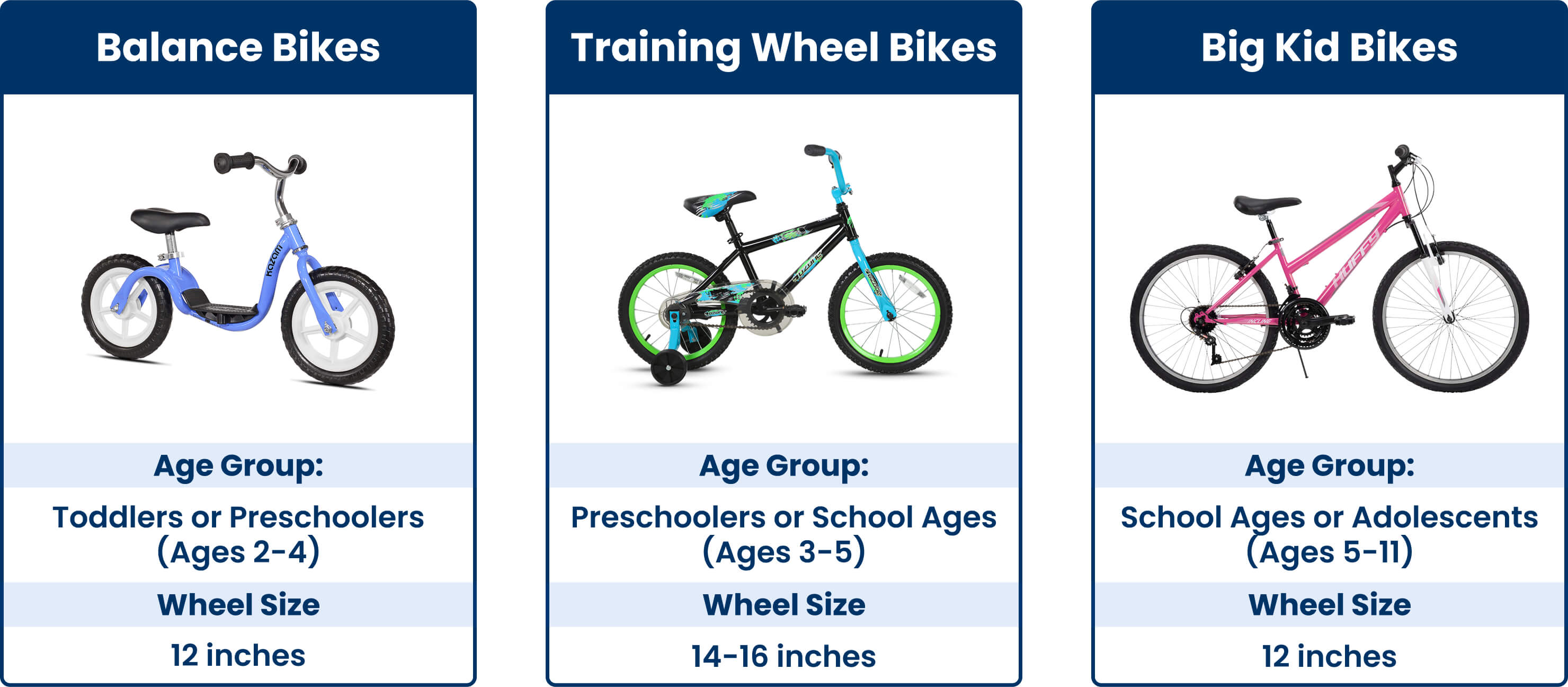
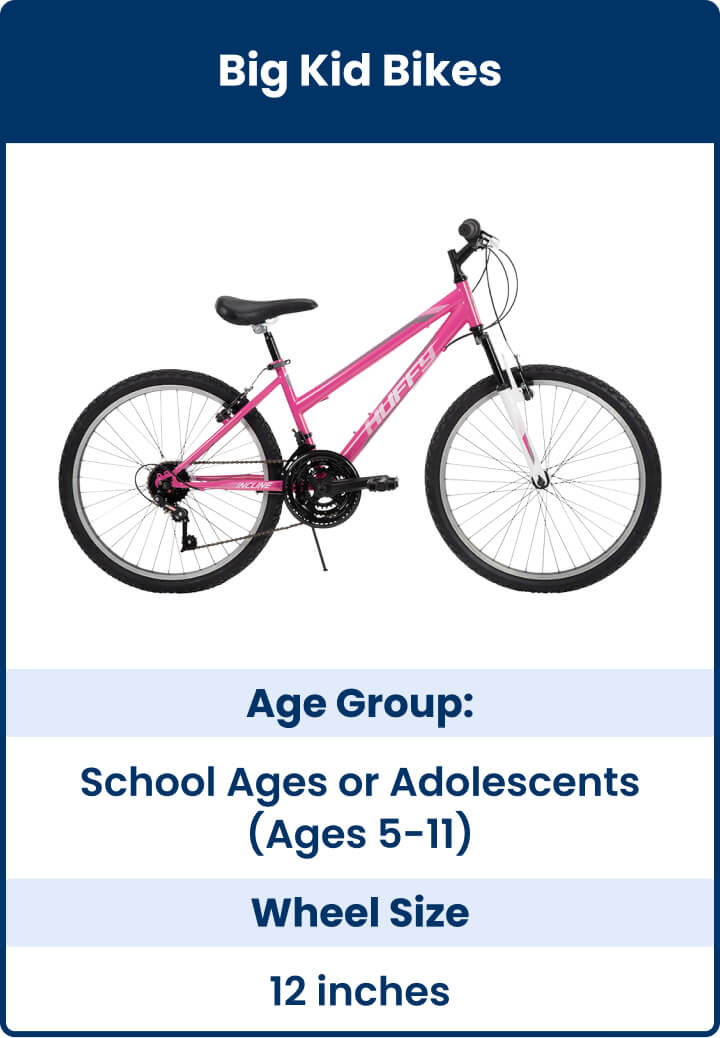
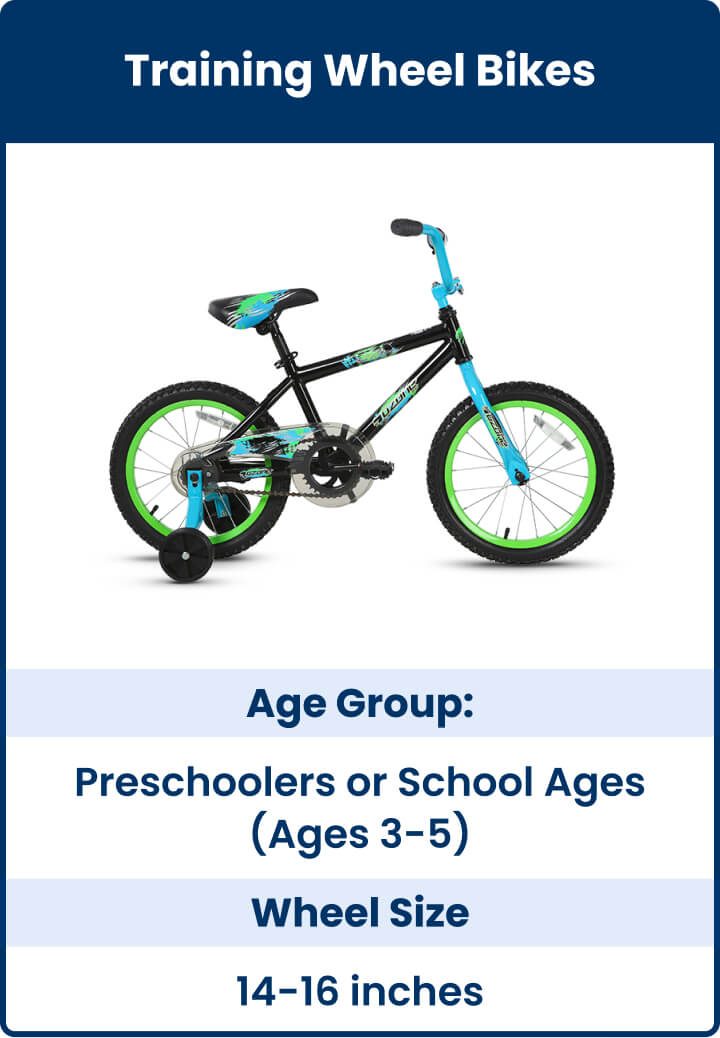
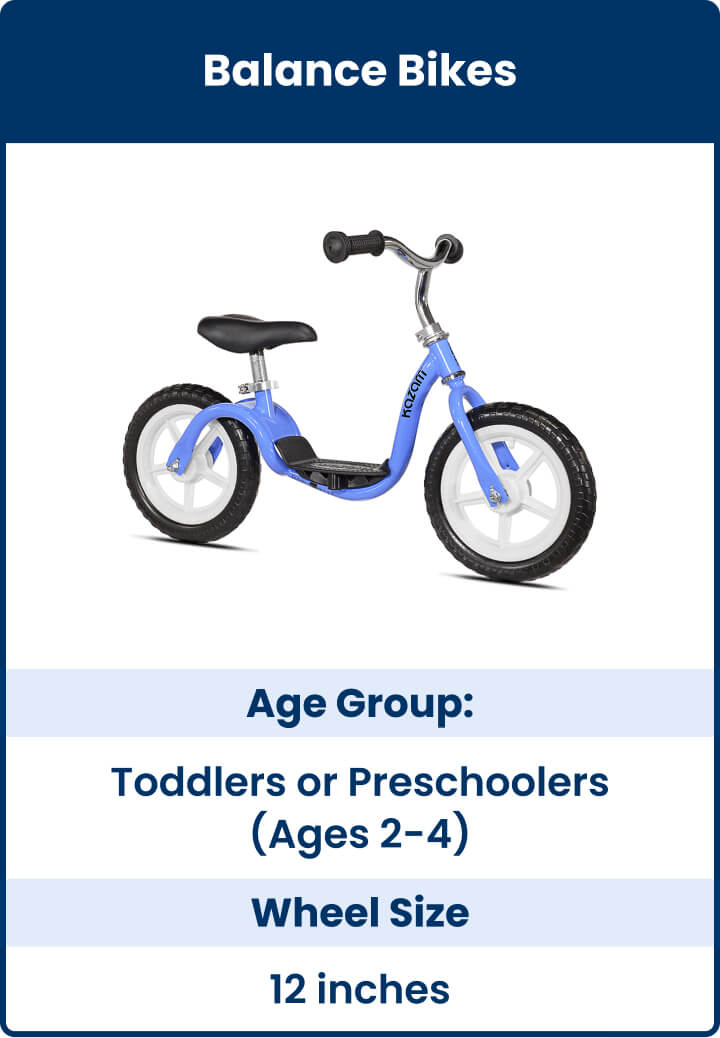
Always make sure the bike you choose is appropriate for your child’s skill level, riding mobility, and age group. Observe your child as they ride, then assess their comfort level on the bike:
- Look for signs of hesitation, instability, or difficulty controlling the bike. This indicates that they need more practice before progressing to a more advanced bike.
- Ask your child about their experience and comfort level on the bike they ride. You can gain valuable insights into their thoughts and feelings and include them in the process.
Toddler or Preschool Riders
Balance bikes are a great option for kids 2-4 years old. The best seat height we recommend would be 1 inch above their inseam.
Toddlers (even preschoolers) can gain many benefits from riding a balance bike:
- Their lightweight and low distance from the ground make them safe for younger children.
- Kids can easily build balance, motor skills, spatial awareness, & coordination.
- They can prepare for more advanced bikes as they age up.

Young Riders (Who Need Training Wheels)
When your child is ready to upgrade from their balance bike, a kids’ bike with training wheels is the best bet! The seat height should be 0-3 inches above their inseam.
Young riders gain the following benefits:
- They provide extra support and balance for young riders.
- They help kids learn how to pedal, brake, steer, and avoid crashing.
- They give kids peace of mind while riding a bike.
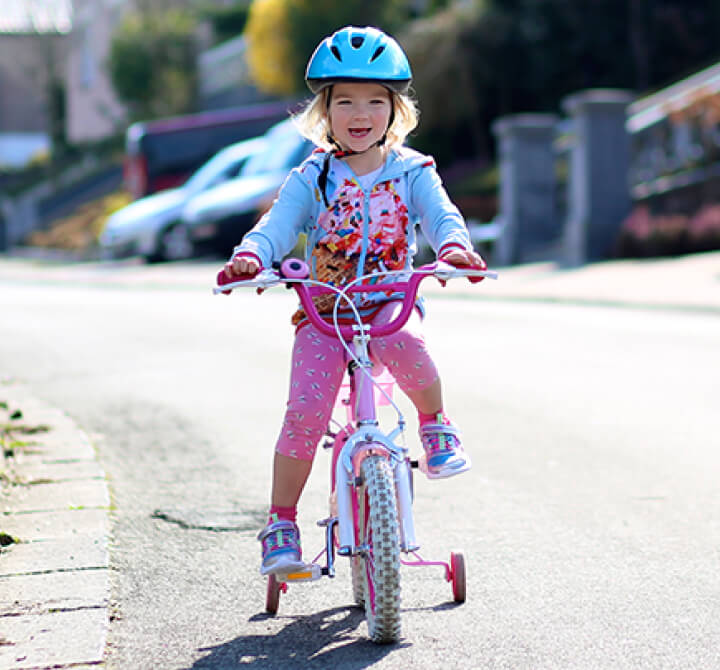
Budding Riders (Who Don’t Need Training Wheels)
For big kid bikes, the training wheels come off! Make sure the seat height is positioned level with the kid’s inseam.
It’s now up to the child to ride their bike while coordinating their balance and operating it simultaneously.
- Introduce them to a big kid bike between ages 4-8.
- Position the seat so your child can rest their feet flat on the ground when not in motion.

Experienced Riders
“Look! No hands,” you hear as you watch your kid show off (safely, of course) around the sidewalk. Position the seat height between 2-4” above their inseam.
You’ll know an experienced rider when you see one. Consider the following when buying a bike for a seasoned rider:
- Position the seat so their tippy toes touch the ground.
- Look for bikes with advanced features for experienced riders: multiple gears, hand brakes, freewheel hub/hand brake, etc.

Expert Tip:
Stuck on the seat height? Your child’s seat should be positioned so their feet are either flat on the ground or so their tiptoes touch, depending on their comfort level.
Choose a Bike Your Child Currently Fits & Can Grow Into
The great thing about kids' bikes is that they’re incredibly diverse. You should be able to find plenty of options out there that fit your child but also offer opportunities to accommodate them even as they grow.
-
Safety and comfort are the two most important things to keep in mind when choosing a new bike.
-
If in doubt, consult a kids’ bike size chart so you can gain some insight about what wheel size you should consider. You’ll get a range of wheel sizes to look out for before you buy a bike!
-
Make sure the wheel size is appropriate for their inseam. Seats often can adjust.
Expert Tip:
You’ll know when a bike is too big or small for your kid. Every child should be able to either plant their whole foot firmly on the ground or touch it with their tippy toes.
In-Between Kids Bike Sizes
Should you size up or down when a kid is in between bike sizes? As long as the child can at least touch their toes to the ground, the bike size should work for them.
-
Never size up too much to where that’s not possible for them.
-
Kids' bike sizes often have some overlap. Thankfully, this gives you a couple of options from which to pick.
On a tight budget? Look for bikes with adjustable seat posts or detachable training wheels for longer use. Buying a tricycle for your child now may seem like the best choice. But a bike with detachable training wheels can last much longer if your child can at least touch their toes to the ground with a bigger wheel.
Have Fun Out There!
Ready to break out the bikes this summer? Your kids are sure to have a blast on our boys’ bikes and girls’ bikes. They can ride from dawn until sunset around the neighborhood or campground (which means you get more time to relax). Don’t forget to shop our selection of bike helmets to keep your kiddo’s head nice and safe!
 Gift Cards
Gift Cards Hot Deals
Hot Deals Big Fun Deals
Big Fun Deals Clearance
Clearance

